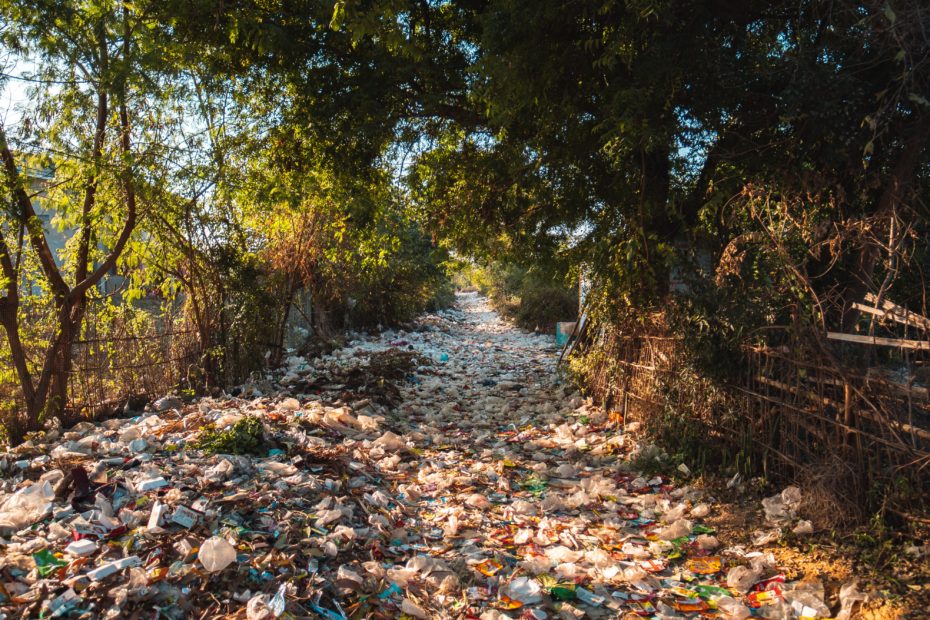Plastic is nearly impossible to avoid in the world that we live in. It can be found inside toys, electronics, cosmetics, and various other products. It is also used to make various single-use items like grocery bags, forks, and candy wrappers. There are many people who are not aware of the fact that they are likely ingesting plastic when they take a bite of food or a sip of water, yet there is a high probability of tiny plastic particles along with it. Microplastics can be linked with human health, animal health, and can damage our environment and ecosystem.
What are Microplastics?
Microplastics are tiny plastic particles that are normally less than 5mm in size. Significant levels of microplastics are now polluting freshwater, ocean, and land. Research also shows that humans and different animals are eating these microplastics. Microplastics in the water that we drink and the air that we breathe can directly impact human health.
When microplastics wash down a drain, they are not removed by the wastewater treatment systems, creating problems in the environment. The microplastics spread far and wide across and throughout the oceans, coastal waters, ocean seabed, shorelines, and of course floating visibly on the sea surface.
Impact of Microplastics on Human Health
There are various chemicals that are incorporated into plastics as additives or raw materials during manufacturing and can leach into the environment. Humans and other animals are exposed to these chemicals when they ingest plastics or chemicals that leach into our food chain or are released into the atmosphere when we burn waste. There are various chemicals directly associated with plastics and have been detected in humans and animals alike, including birds and many marine species.
There is evidence that microplastics can cross the hardy membranes that protect the brain from the foreign bodies that pass into the bloodstream. There is also evidence that mothers might be able to pass microplastics through the placenta to the developing fetus.
How Microplastics affect the Environment?
There are some pollutants and heavy metals that can stick or adsorb to plastic surfaces. As a result of this, plastics can act like sponges in our environment, thus passively collecting chemicals onto their surfaces. As plastics can often remove the persistent organic pollutants from water, so there is quite a concern about what will happen if the animals ingest plastics that contain these absorbed pollutants.
The persistent and toxic chemicals are widely distributed to the marine environment and have already concentrated on the plastic surfaces at up to a million times the concentration as compared to the surrounding water. The toxic chemicals can transfer the ingested plastic to the animal tissue where the plastic can become concentrated within the animal and gets transferred through the food chain.
The Importance of Filtering Tap Water
Because of the high amount of risk that is associated with impure water, the demand for water filters has never been higher. The natural resources are also under pressure as we grapple with climate change, pollution, and a growing population.
Unfortunately, tap water that is meant to be safe for drinking can be harmful as it can have contaminants that can affect the overall quality of water. Additional physical, chemical, and microbiological impurities from different water sources can make water even more unsafe to consume.
Boiling water might be sufficient to kill germs and bacteria, but now things have changed, boiling water alone is no longer sufficient and microplastics and other dangerous chemicals are able to find their way into the water sources. That is why everyone needs to understand the importance of water filters to ensure their families are drinking safe water.
A water filter removes not only bacteria, but also microplastics and harmful chemicals that can cause poor health and diseases. A water filter not only result in a better-tasting, but also better smelling water by removing pesticides, chemicals, microplastics, and other heavy metals.
A water filter also reduces the risk of certain cancers that include rectal cancer, colon cancer, and bladder cancer by ridding water of chlorine and other chlorine by-products. When you drink filtered water daily, it leads you to general well-being and helps prevent diseases.
Final Point
Our body requires safe drinking tap water to remain healthy. Microplastics and various other dangerous chemicals can cause severe issues to our health and impose life-threatening dangers to animals, especially marine life and the overall environment. That is why using a water filter, wherever you go is a necessity, even in locations where the standards are considered high.
Remember, your body is over 60% water and the brain is over 73% water! Lets stay sharp by hydrating the right way, the safe way and choose a portable water filter straw to filter our local water at source, instead of buying yet more bottled water. Save your money, health and the wider environment by refusing to use bottled water which relies on disposable, one time plastic bottles.
